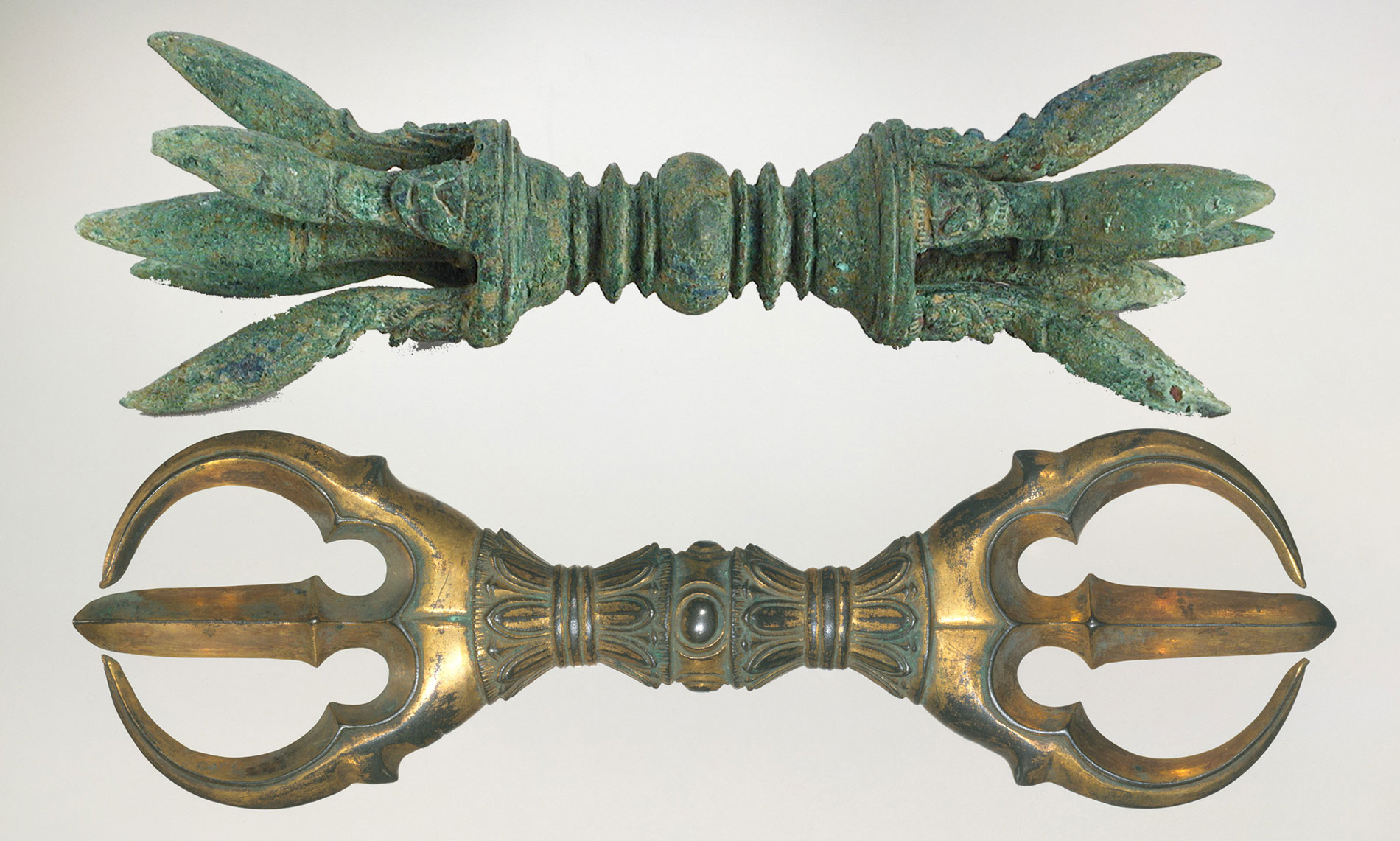 |
| Top: Vajra with its open prongs (Weapon of Indra) Bottom: Vajra with its closed prongs (A Symbol in Tibetan Buddhism) |
Totems or symbols play a significant role in cultures of the world; may it be 'noble savages' and religions of the past, or the modern "Global Village" which claims itself to be differed from all the religiosity of man and considers itself centered around rationalism, reason and science. Totems are a symbol that a culture considers sacred, often incorporated into religions as a part of 'ritualization of culture'. Analysis of Cultural Symbols, to understand the evolution of Religion can be traced back to Emile Durkheim, a renowned French Sociologist who is famously associated with laying foundations of Modern Social Sciences as they exist. To this age, his works are still considered the authentic works of reason, as they used to be in contemporary times.
The idea that prevailed in rationalized culture of modernity was the sense of self-superiority in ideas; which, if taken into account by the arguments presented by Post-modern philosophers, question that superiority. We are not making an argument about the superiority or inferiority of any Zeitgeists; for if one were to analyze the fundamentals upon which these epochs stand, they have more in commanlity than differences. We are only looking at these concepts through an eye of skepticism when philosophically arguing against them; in doing so we hope not of reaching Nihilism but only the greatness of man.
Arriving upon the symbolism of our movement, we symbolize our ideals around Vajra, a diamond, both strong and beautiful; a product of meticulous art and hard work, which requires careful examination, studying and most importantly patience, to be perfected and handed over to the deserving. If seen through the lens of mythology, it is a weapon of Indra which he used for defeating Vrtra. It was produced by the greatest of artists and creativists, Tvashtr using the bones of Rishi Dadhichi, a symbol of intellect, virtue and wisdom. An unstoppable force of nature which destructs everything in path and gives life.
We are in no way associated with Vajrayana Buddhism although we have utmost respect towards them. We do not see Vajra as a mere symbol of peace but also of strength and violence. We do not see it as a mere means to achieve moksha or Shunyata but also as an all-round development of Individual and the Society as a superstructure. In our opinion, the time has arrived for the re-opening of those closed prongs of Vajra and achievment of heroism and greatness of individuals.
This movement of ours is not an ideology for gaining mere political leverage, it also encompasses spectrums from Philosophical to Spiritual; from Moral to Metaphysical. The end of our movement lies in creation of an individual that is like Vajra, an indestructible, irresistible and a positively creative force capable of Beauty and Brutality at the same time; just like an indefinite, eternal Prakriti. Therefore we will call such eventual individual as Rudra, and our movement as Vajraism or Vajratva (वज्रत्व).
Glossary
- Totems: Totems are the emblems of a clan or a group of people, which serve a purpose of solidarity among the people of such group. The word finds its origin in Ojibwe language of Native Americans and was used extensively by sociologists like Emile Durkheim while studying Australian Aborigines for understanding the Evolution of Religion.
- Noble Savage: Noble Savage is often used for describing Primitive Societies which remain untouched by the 'civilized world' and are thus considered pure and noble.
- Post-Modernism: Post-Modernism is used for referring to the current era of Human History which is clouded by a sense of skepticism towards rationalism of modernity as a moral evolution and goal of Human Society.
- Zeitgeist: Zeitgeist, a central concept in works of G.W.F. Hegel, refers to a trend or a "spirit" that prevails in a particular era. In this post is used for referring to Philosophical trends of those particular eras. (A fine page on understanding Hegel's Geist)
- Prakriti: Prakriti in this post refers to an unobservable, eternal existence which one may scientifically say "Universe", but it is more than what one can materially perceive. It is an uncertain fundamental force that guides behaviour of everything. Thus being Brutal and Beautiful at the same time.